Magicicadas are not magic, just noisy
It’s been 17 long years since we’ve seen the periodical cicadas of Brood V. They will soon crawl through the warm dirt and emerge across parts of Ohio, Maryland, Pennsylvania, Virginia, West Virginia, and Long Island, N.Y. Millions of them will shed their skins and start looking for mates.

Cicadas are insects, which means they have three body parts: a head, thorax and abdomen. They belong to the order Hemiptera, and are different from other insects in that both the nymph and adult forms have a beak called a rostrum. The long, thin beak works like a straw to suck the sap from plants for food and drink.
Periodical cicadas have red eyes. Between the red eyes is a triangle of three smaller, jewel-like eyes known as ocelli that are used to detect lightness and darkness. They have an orange appearance, compared to the annual dog-day cicadas that have black eyes and are overall greenish in color. The latter emerge every year in August.
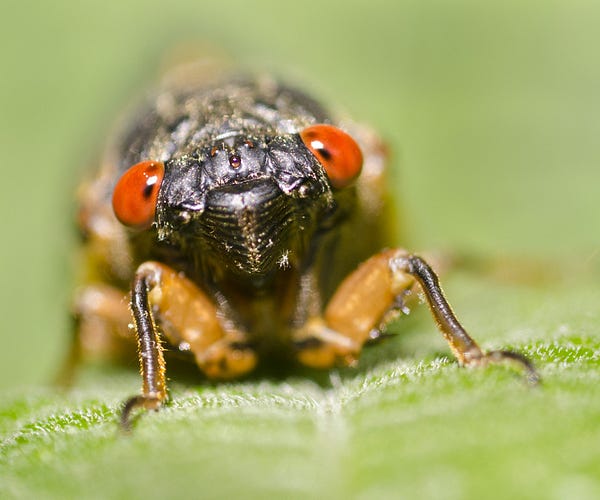
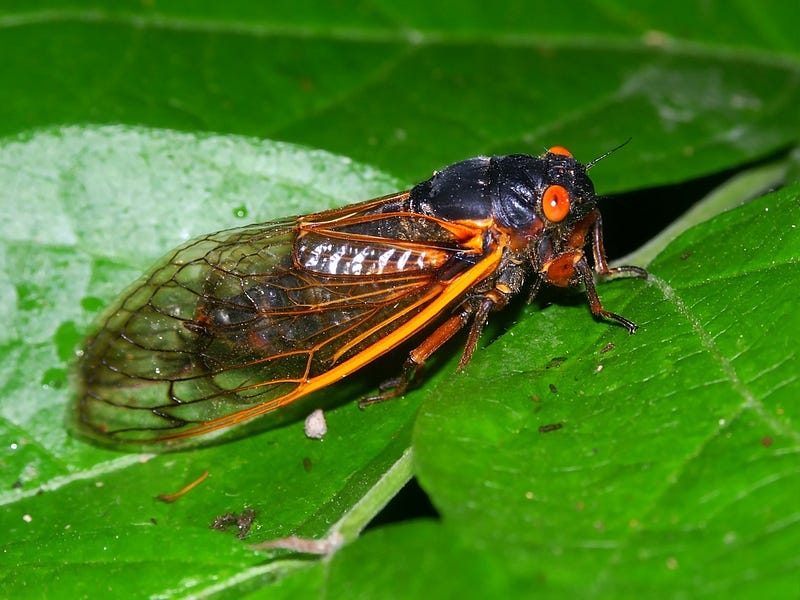
Brood V species include Magicicada septendecim, Magicicada cassini and Magicicada septendecula. As the ground (7 to 8 inches deep) warms up to 64 degrees in late May, young periodical cicadas — called nymphs — emerge from tunnels. They crawl to the nearest tree to shed their exoskeleton. Once their old skin is gone, their wings inflate with fluid and their adult skin hardens in four to six days.
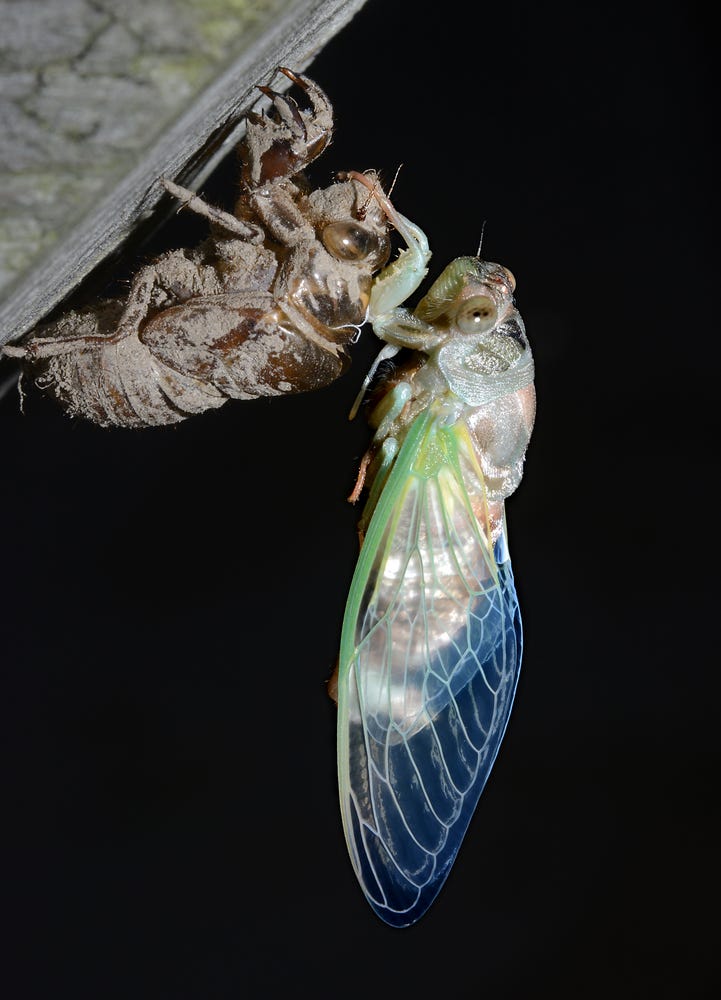
Really, REALLY Loud Love Songs
Adult cicadas fly from tree to tree, making sounds for three to four weeks to attract mates. The males flex their tymbals, which are drum-like organs found in their abdomens. A swarm of the insects can produce sounds up to 120 decibels. That is louder than a rock concert (about 115 decibels) and comparable to the noise from a chainsaw. Humans start to experience pain from sound at the 110 to 120 decibels level.
Female cicadas interested in the chorus of males will respond with subtler noises by beating their wings. Males mate multiple times during their brief period of adulthood, while females generally mate just once.
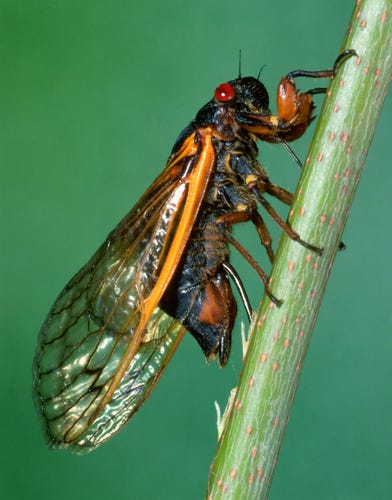
A female cicada lays more than 600 eggs. Using her ovipositor, she carves a groove in a tree limb and deposits about 20 of the rice-shaped eggs. The groove provides shelter and exposes tree fluids, which the young cicadas feed on. When the eggs hatch six to eight weeks later, the larvae look like termites or small white ants. By this time, the adult cicadas have died.
Once the young cicada is ready, it crawls from the groove and falls to the ground. It then digs 6 to 18 inches deep until it finds roots to feed on. This begins the next 17-year cycle.
No Need to Run
Periodical cicadas are often misnamed “locusts.” Locusts are grasshoppers and have a bad rap for destroying everything in their path. Cicadas are more closely related to aphids, such as leafhoppers, spittle bugs and jumping plant lice. They will not harm people, pets or livestock.
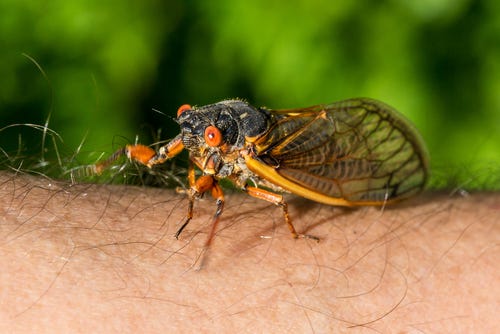
Cicadas are attracted to sounds made by lawn mowers and power tools, so don’t be surprised if one lands on you. But don’t be alarmed either. They do not bite or carry disease, and they don’t damage structures.
Young trees can be harmed when the females lay their eggs in new growth. To protect small trees, wrap them in cheesecloth or other screening material. Pesticides won’t work; there are just too many of the insects.
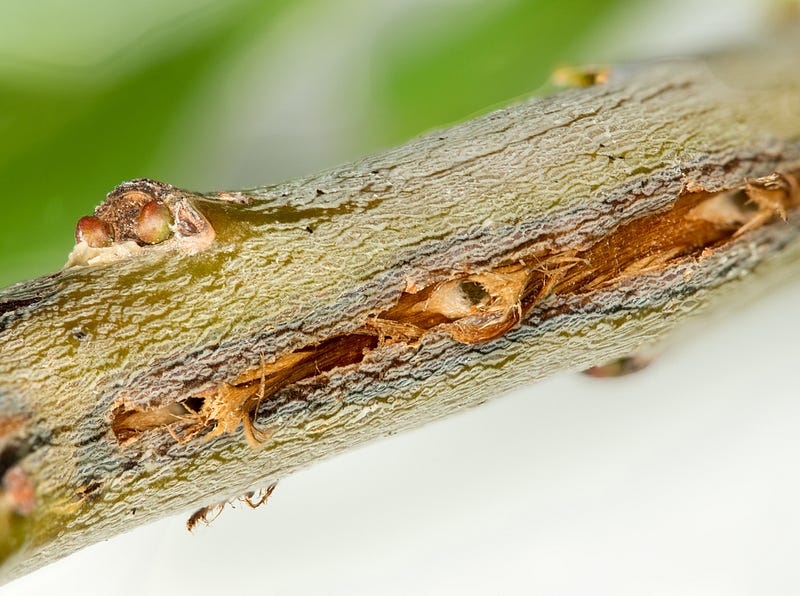
Older trees can be prone to “flagging.” This natural pruning is actually beneficial, resulting in increased numbers of fruits in the succeeding years. Cicadas also turn over large amounts of soil as they emerge. When they die, their decaying bodies add a lot of nitrogen and other nutrients to the soil.
Snack Attack
Many animals, including rodents, birds, lizards, moles and fish, like to eat cicadas when they emerge from the ground. Humans can also snack on them. In fact, they are low-carb and gluten-free!


Female cicadas are great for snacking. They are fat and full of nutritious eggs. On the other hand, adult male cicadas have hollow abdomens, so they’re only crunchy. You could deep-fry cicadas and dip them in a sauce, or roast them to bring out a nutty flavor. You could also candy them, using the recipe below.
Candied Cicadas Recipe
· 1 pound cicadas
· 1 cup white sugar
· 2 tsp ground cinnamon
· ¼ tsp salt
· 3 tbsp milk
· 1 tsp vanilla extract
Preheat oven to 350°F (177°C). Spread cicadas in a single layer over a baking sheet. Roast for approximately 15 to 20 minutes, or until the cicadas start to turn brown and are thoroughly dried out.
Stir together sugar, cinnamon, salt and milk in a medium saucepan. Cook over medium-high heat for eight minutes, or until the mixture reaches the soft ball stage at 236°F (113°C). Remove from heat, and immediately stir in vanilla.
Add cicadas to sugar syrup, and stir to coat well. Spoon onto waxed paper, and immediately separate cicadas with a fork. Cool and store in airtight containers.
#CicadaSelfie
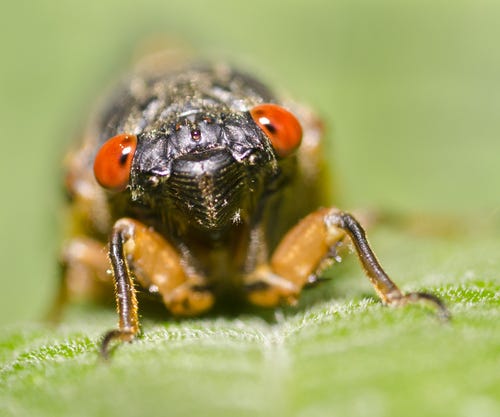
We want to see your cicada selfies!
Once the cicadas begin to emerge in your area, snap a pic with them. Then tag us on Twitter (@metro_parks) and Instagram (@summitmetroparks), and include the hashtags #cicadaselfie and #summitmetroparks.
If you want to learn more, join us at our programs on cicadas:
Return of the 17-Year Cicadas • program info
Sunday, May 29, 1–4 p.m. at F.A. Seiberling Nature Realm/Visitors Center
What’s that Deafening Sound? • program info
Sunday, June 19, 2–4 p.m. at F.A. Seiberling Nature Realm
And if you try the candied cicadas recipe, let us know how it is. We’ve had enough protein for today.